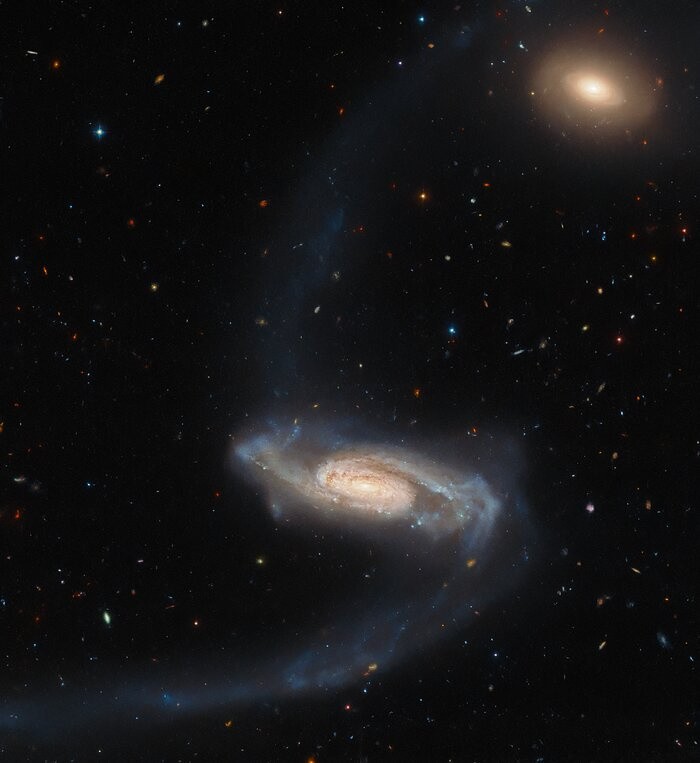The strange spiral galaxy ESO 415-19 is around 450 million light-years away from Earth. It can be shown spreading lazily over the NASA/ESA Hubble Space Telescope image.
The galactic nucleus of this object seems like a conventional spiral galaxy with vast streams of stars extending out from it like weirdly stretched spiral arms. These are tidal streams created by a fortuitous collision in the galaxy's past that give ESO 415-19 an odd look.

Spiral Galaxy ESO 415-19
The uniqueness of ESO 415-19 makes it an ideal target for Hubble Space Telescope, SciTech Daily reported. It was discovered from an ongoing attempt to investigate the Arp Atlas of Peculiar Galaxies, which is a collection of some of the strangest and most fascinating galaxies in the cosmos.
These peculiar galaxies range from strange solitary galaxies to magnificently interacting galaxy pairs, triplets, and even quintuplets. The space telescope may take a time to study them as it moves between other observational sites because these space anomalies are scattered throughout the night sky,
This specific sighting is in the Fornax constellation's area of the night sky. The constellation was also the location of a significant Hubble observation, the Hubble Ultra Deep Field.
The Ultra Deep Field took about a million seconds of Hubble time to create and capture approximately 10,000 galaxies of varied ages, sizes, forms, and hues.
Astronomers can use deep-field observations to investigate slices of the history of the universe dating back to when the cosmos was just 800 million years old just as climate scientists may reconstruct the planet's climatic history from ice cores.
READ ALSO : Hubble Space Telescope Inspects Two of the Galaxies in a Galactic Triplet 200 Million Light-Years Away
Arp Atlas of Peculiar Galaxies
The Hubble classification separates galaxies into the well-known types of smooth, amorphous ellipticals and flattened spirals with star-studded arms, it is impossible to avoid a simplistic notion of what a galaxy is.
However, not all galaxies fit the Hubble sequence's schematic idealization. In reality, every galaxy is unique when examined attentively. It is necessary to appreciate these distinctions in order to get a true image of what galaxies are like.
Halton C. Arp was a prominent figure in the current dispute about the formation and development of galaxies in the cosmos, as per the Astronomical League. His seminal collection of strange galaxies prompted him to question the fundamental premise of contemporary cosmology, that redshift is a uniform measure of distance.
The overarching goal of the Arp Atlas of Peculiar Galaxies is to show a variety of examples of unusual galaxies. They are given in groups that appear to be generally comparable, providing a crude, preliminary categorization.
Phenomena represented by each group can then be investigated by selecting the most favorable members in terms of size or brightness, studying different members of the group in different orientations, and, finally, compiling some preliminary statistics on certain types of phenomena and their relationships to other observable parameters.
It is intended that this investigation will not only elucidate the workings of galaxies but will also uncover physical processes and how they act in galaxies, providing a clearer knowledge of the workings of the Universe as a whole.
RELATED ARTICLE: Hubble Space Telescope Captures Glowing Ring of Stars From a Pair of Entwined Galaxies
Check out more news and information on Space in Science Times.
© 2025 ScienceTimes.com All rights reserved. Do not reproduce without permission. The window to the world of Science Times.












